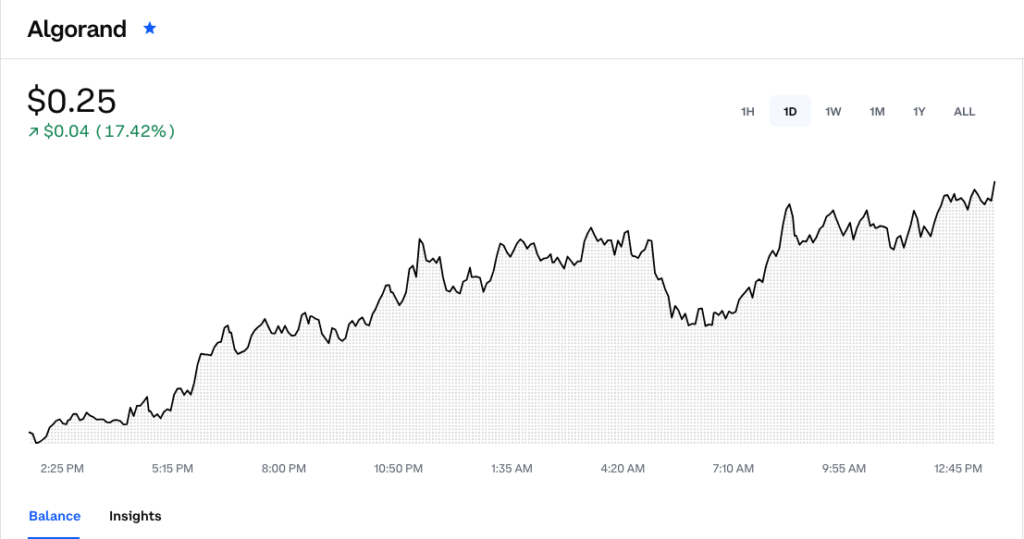Algorand (ALGO) Network

Algorand (ALGO) in Crypto History
Algorand cryptocurrency that was founded by Silvio Micali. Silvio held a career, as a professor of computer science at the Massachusetts Institute of Technology. Micali received the Turing Award in 2012 for his contributing work on secure two-party computation, blockchain protocols, electronic cash, and cryptocurrencies. Professor Micali, is recognized as a contributor in the crypto community. Algorand was launched in June 2019 with its main network design in place. By December 2020, the network had gained capacity for a large volume of transactions per day. Algorand was originally distributed in June 2019 and still maintains a distributed ledger at the time of this writing. The number of tokens, is finite and set for distribution to conclude in 2030.
Algorand Network Potential Use Cases
The Algorand organization, has the goal of supporting a large range of applications. Algorand is secure, scalable, and efficient. The Algorand network has the hallmarks of reliability in terms of base infrastructure and is considered to have low transaction fees and fast transaction times. Algorand was designed to be compatible with Ethereum. The primary goal of this built in compatible nature, is to connect to the Ethereum DApp ecosystem. It is there, where many applications harness the infrastructure that creates the possibility of more users to the Algorand ecosystem. The project is currently taking on the goal of integrating the DeFi ecosystem on Algorand.
Algorand Network Operations and Future
Algorand operates on a pure proof-of-stake (PoS) blockchain protocol that is permission-less. Typically, within a proof-of-work (PoW) blockchain, the root block must be validated by randomly-selected validators using computing power. The network employs a pure proof-of-stake approach, where all validators are known to each other and only need to agree on the next block in order to create a new one. The Algorand ecosystem was designed with a two-phase block manufacturing procedure, including both proposing and voting.
Algorand has recently experienced significant developments in both its market performance and technological advancements and market performance. In late November 2024, The price of Algorand surged by over 15%, reaching a two-year high of approximately $0.40. Moving into the end of 2024, the Algorand price has declined by more than 20%. This downturn is attributed to increased selling activity, amidst a downturn in the overall crypto space during much of December 2024. Algorand has announced the introduction of a staking rewards program. Staking Rewards are scheduled to begin in December 2024 following a network upgrade. This program aims to incentivize validators who successfully propose blocks on the Layer-1 blockchain.
Keeping With The Times
In the spring of 2024 we saw the launch of AlgoKit 2.0. This release became the first Layer-1 blockchain to support Python as a native programming language. This upgrade simplifies the development process for a broader range of developers, enhancing accessibility and fostering innovation within the ecosystem. The Algorand blockchain technology has been adopted in various global initiatives, including a project in Italy, with the goal of reducing fraud in bank and insurance guarantees, and a digital health passport initiative in India to help women access public health programs. Pushing forward, in June 2024 Algorand began the initial launch of its first tokenized money market fund. This effort marks a significant milestone in the integration of blockchain technology with traditional financial instruments.
The Algorand official website can be found here at the land of Algorand.